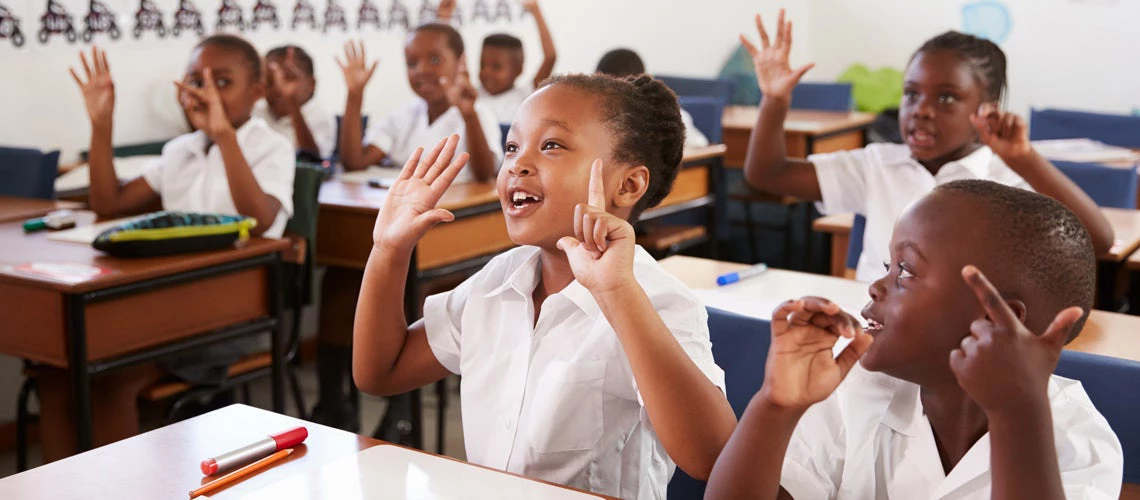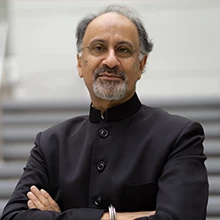 Photo credit: Shutterstock
Photo credit: Shutterstock
Governments across the globe will spend about $5 trillion on K-12 education this year. But unless they get all children and young people back to school, keep them in class, and recover the central elements of learning, this generation could lose twice or three times that amount in earning losses.
The first impact was the millions of lives lost due to the disease caused by the COVID 19 virus. The second was the human suffering caused by job instability and poverty. The third is on children and youth who should have been in school but were told to stay at home.
It is two years since the pandemic started. Nearly all countries decided that one of the main ways to fight the pandemic was to keep students out of school and universities. Public health experts had decided that keeping education institutions open would lead to further spread of the virus. To “flatten the curve” and prevent overcrowding of hospitals, kids would have to stay home.
Many European and some East Asian countries reopened school relatively quickly, conscious of both the obvious costs for kids and the scant evidence of the benefits of the complete closure. But in many countries in South Asia, Latin America, Middle East, and even in East Asia, school closures were maintained for exceptionally long periods. Our own countries, India and Peru, are tragically representative.
By the end of 2021, school days lost were well above two hundred—that’s about a school year and a half. This prolonged interruption in learning could have grave long lasting effects, particularly in middle income and poor countries.
Most of the impact will be on children and youth who happened to be between 4 and 25 years old in 2020 and 2021, generating a huge intergenerational inequality. Being out of school for that long means that children not just stop learning, they also tend to forget a lot of what they have learned. In late 2020, the World Bank estimated that a 7-month absence from schools would increase the share of students in ‘learning poverty’ from 53 to 63 percent. An additional 7 million students would drop out of school. The effects on marginalized minorities and girls will be even worse. Our loss estimates have been revised upwards, and now we expect that, unless swift and bold action is taken, learning poverty can reach 70%.
Biggest losses for those with the least
In all countries—rich, middle-income and poor—kids from the poorest families are bearing the largest losses as their opportunities to maintain any educational engagement through remote learning are limited. Internet access for them is poor: only half of all students in middle income countries and just a tenth in the poorest countries have web access. The use of TV and radio and facilitating learning materials has helped, but it cannot replace interactive education. ‘Learning’ cannot just mean watching television or listening to the radio for a few hours a day.
The result is a widening of the already large inequality of opportunity. In the developing world, COVID-19 might lead to lower growth, higher poverty and more inequality for a generation, a terrible triple threat to global prosperity for decades to come.
"The future of a billion kids around the world is at risk. Unless we get them back in school again and find ways to remedy the effects of the interruption, COVID-19 will result in a huge setback for this generation."
By late last year, we had hard data about learning losses in middle-income countries like Brazil and India. In the state of São Paulo, for example, educators decided to measure the status of learning continuously—as opposed to many countries who have postponed any type of learning measurement, maybe to avoid getting bad news. They find that after a year without in-person classes, students had learned 27 percent less what they would have learned in normal times. India’s Pratham, a well-regarded education NGO, has found that minimum proficiency levels have been cut by half in the state of Karnataka.
Three new "Rs" for a novel coronavirus
Encouragingly, by the end of 2021, schools had reopened in many countries. But nearly one in four education systems were still closed and many systems had reopened only partially. 1.5 billion children were back in class, though 300 million kids still need to be brought back to school safely. But that was before the Omicron variant of the virus. These numbers have changed since the start of this year.
We think a blend of reopened schools, remote learning and remedial programs can limit the damage caused by the disruptions and serve as a model response for future shocks—and maybe even make public education better than it was a couple of years ago.
Reopen schools safely. If you’re unsettled by the image of millions of kids sitting and staring at the TV, consider this: more than half the households in 30 African countries don’t even have electricity. For just too many children in the world, conditions at home are not conducive for learning, too many do not have Internet access, a decent device, or money to pay for data or books, and a space to study at home. And education is inherently a social endeavor: it requires incessant interaction. This means brick-and-mortar schools, which must open and be made safe for students and teachers. Investments are needed. Quite often there is money available for this and there is no dearth of guidelines from international agencies on how to reopen schools safely. What is generally missing in many countries is a national sense of urgency.
Invest in remote learning. World Bank and OECD teams completed an assessment of remote learning during the two years of the pandemic. The results are not always encouraging. But the pandemic showed that hybrid learning innovations -combining in-person and remote instruction through smart use of digital technologies— are here to stay. But investments in technology have to be cleverly coupled with investments in learning skills. The pandemic has quickened a change in mindset about the use of technology, and we have a small window of opportunity to get teachers and administrators to see technology as part of the learning process. Besides, this is not the last pandemic or natural disaster that might force schools to close. By facilitating the continuation of the learning process at home, better learning technologies in the classroom can also make the system more effective both when schools are open and when they have to be closed.
Remediate to recoup missed and lost learning. In the United States, students returned last Fall with about a third less learning in reading during the 2019-20 academic year than they normally would have. In many countries with long school closures, students are attending a grade without having grasped even a small portion of what was taught in the previous grade. If kids don’t catch up, particularly those in the early grades where losses are larger, they might eventually even drop out. Across the world, schools must adapt to the needs of students—both the fundamental skills of literacy and numeracy, and their mental health and well-being. Encouragingly, though, students who learned less last year tend to rebound faster than others—if they are provided access to remedial instruction. But this cannot be done without additional support to teachers and principals.
Averting a permanent loss
To help in these efforts, the World Bank Group is working on nearly a hundred COVID-related education projects in more than 60 countries. These projects sum up to $ 11 billion. These are record numbers for the World Bank, but a fraction of the $72 billion the US federal government is making available for public schools to reopen safely. We are supporting countries as diverse as Chile, Jordan and Pakistan. More efforts are needed to finance the return to classroom-based teaching, and help public schools adopt teaching techniques that blend on-line and in-classroom learning and teach students at the level they need today after the months and years they have been denied of an education, focusing on foundation skills and in their emotional wellbeing
The future of a billion kids around the world is at risk. Unless we get them back in school again and find ways to remedy the effects of the interruption, COVID-19 will result in a huge setback for this generation. When the fallout of the coronavirus is finally tallied, it will become clear that its biggest damage is the lost learning of school-goers.
A decade from now, we may look back and find that the biggest permanent loss of this pandemic was avoidable. We can act now and avoid the regret.
Note: A version of this blog was first published on the Future Development Blog of the Brookings Institution on January 28th, 2022.



Join the Conversation